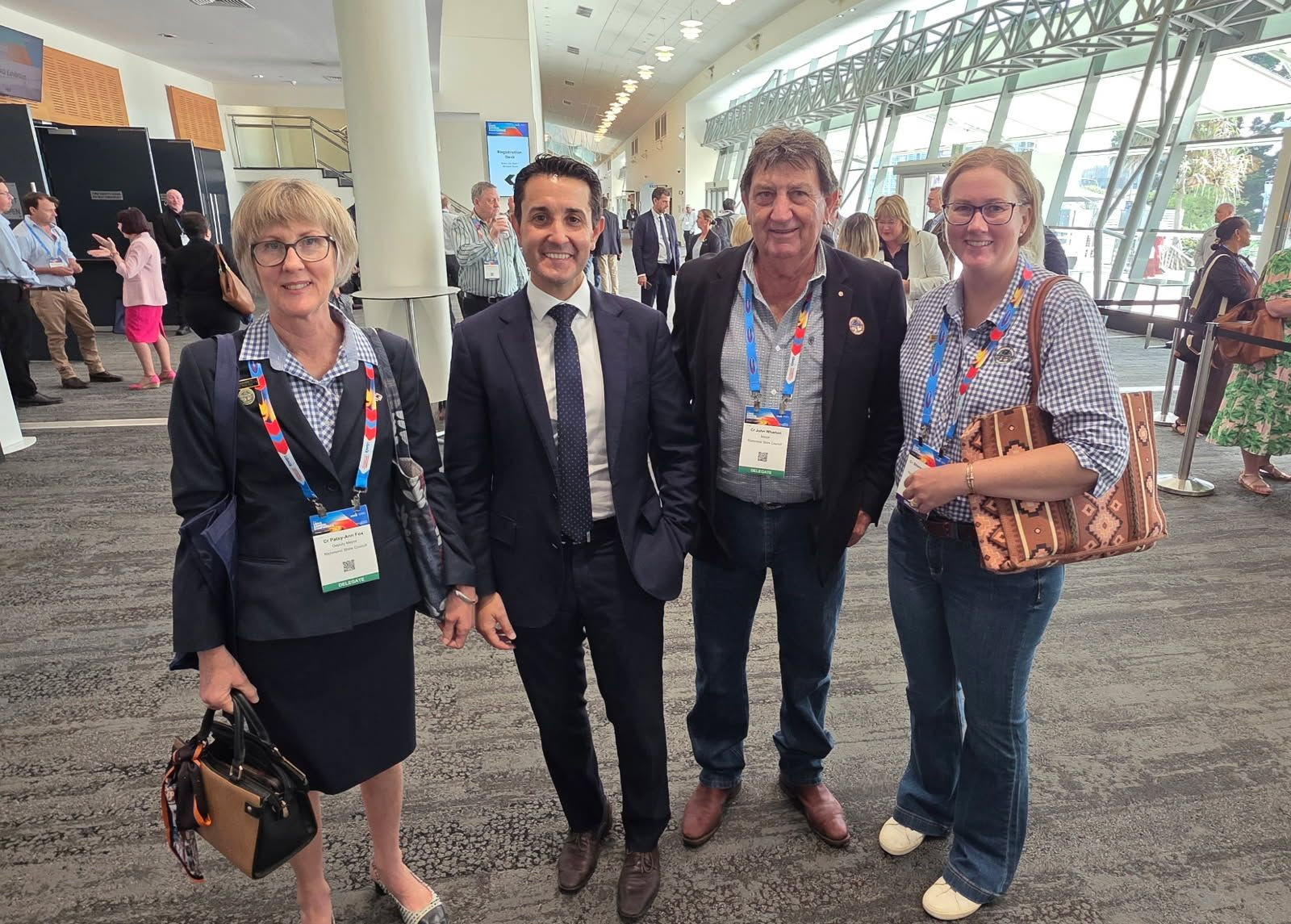General News
22 October, 2025
'A new frontier': Chickpeas paving the way for council
Richmond Shire has shared its success story with other councils from across Queensland.
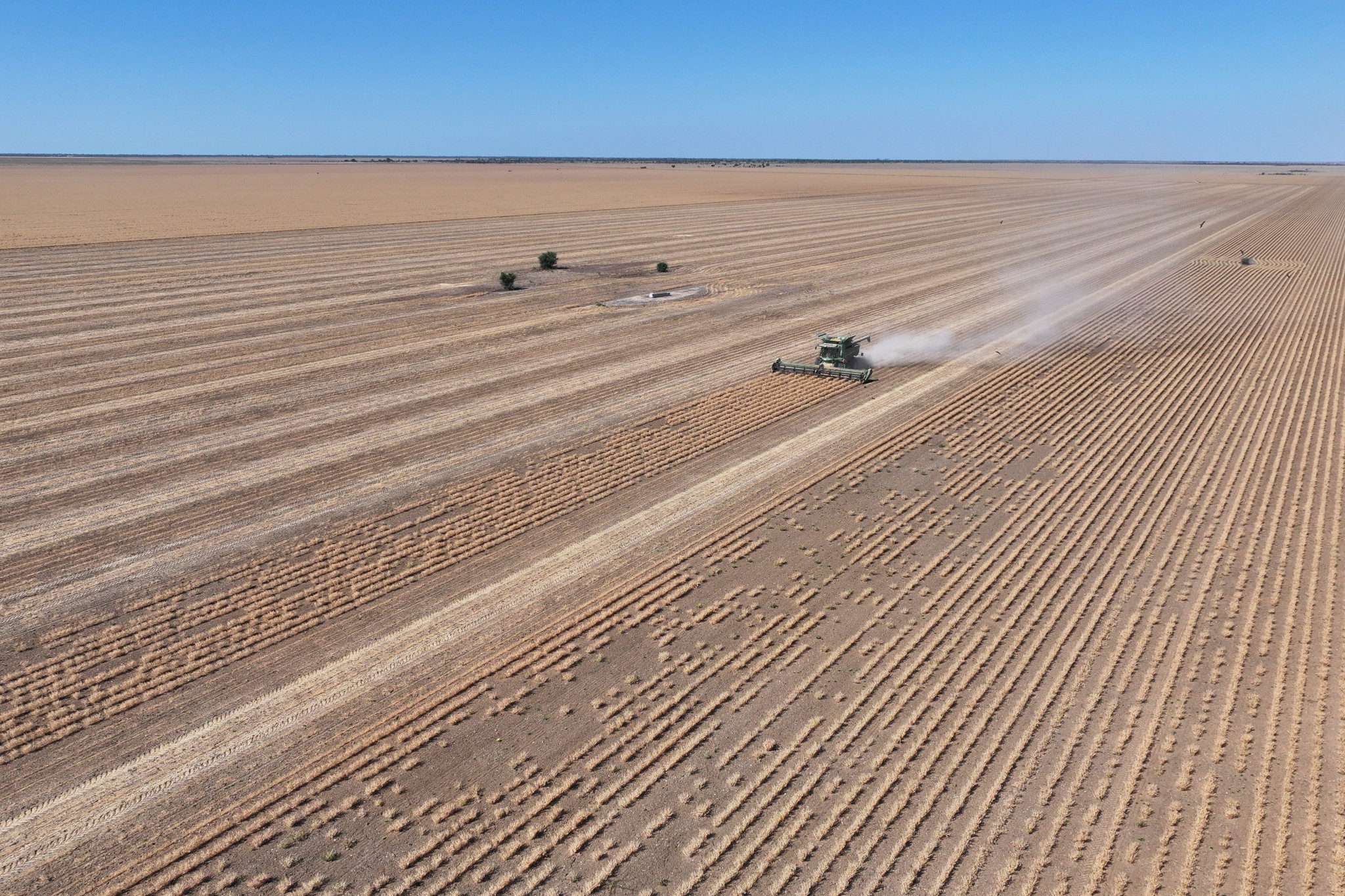
In a part of Queensland better known for cattle and red dust than cash crops, Richmond Shire Council has pulled off an unlikely success story – turning paddocks of chickpeas into profit.
What began as a bold experiment to wean the small Outback shire off government grants has blossomed into a thriving revenue stream, generating around $300,000 in its first full season and positioning the tiny town of Richmond as an unexpected player in Australia’s grain export trade.
Led by long-serving mayor John Wharton and chief executive officer Peter Bennett, Richmond Shire has grown and sold thousands of tonnes of chickpeas in a bold bid to create income and diversify the local economy.
The idea originated several years ago when the council sought ways to reduce its dependence on state grants and mining royalties.
“We’ve got to change our attitude,” Cr Wharton told delegates at Tuesday’s Local Government Association of Queensland conference on the Gold Coast.
“We had to start thinking like a business.”
“We don’t want to have to rely on financial assistance grants or any other handouts. We love them when they come, but we also need to have a business.
“That’s what it’s all about – building income.”
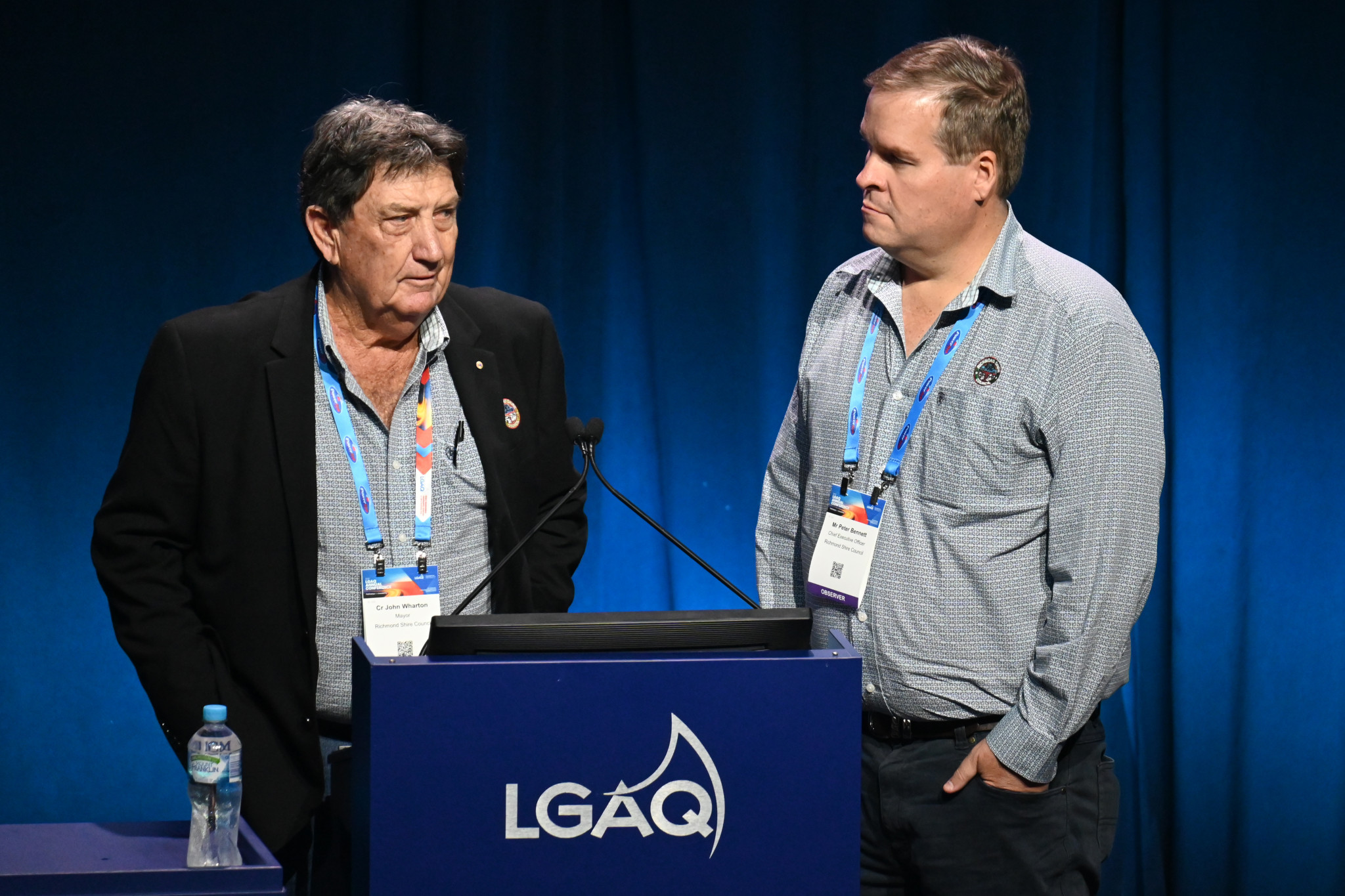
And build income they did. The chickpea crop, planted on council-managed land at Maxwelton – about 50 kilometres west of Richmond – has generated close to $300,000 in profit in the first year.
“We used to get 30 grand a year,” Cr Wharton said of the land that was previously leased for cattle.
“We’ve now gone to nearly 300 grand a year. Next year it should be a fair bit more than that.”
The success came after the council sowed roughly 1300 hectares of chickpeas on deep, black-soil country under a lease from the Department of Natural Resources.
“It’s a six-year lease with a buy-back after six years to do what we want to do,” Cr Wharton explained.
“We started at Maxwelton – it’s deeper black soil – and chickpeas love that country. The beauty of chickpeas is you don’t have to plant before it rains; you plant after it rains.”
Council staff and local contractors worked closely with the Department of Primary Industries to gather data from the trial and to prove the region’s viability for large-scale dryland farming.
Mr Bennett said the council’s approach was deliberately transparent.
“We planted just over 1300 hectares of chickpeas, and we’re working with the DPI because there’s very little practical information for potential farmers up here,” he said.
“We’ve now got prices per hectare, costs of spraying, clearing and harvesting – we can give that data to anyone interested.”
The project also created spin-off benefits.
“We had to pay about $15,000 to get a harvester up here because there’s no real industry yet,” Mr Bennett said.
“But the local farmer we got employs 20 people. And if you get more farmers doing that, it builds the community – more kids in the school, more people in the bank, more teachers.
“That’s what this is really about.”
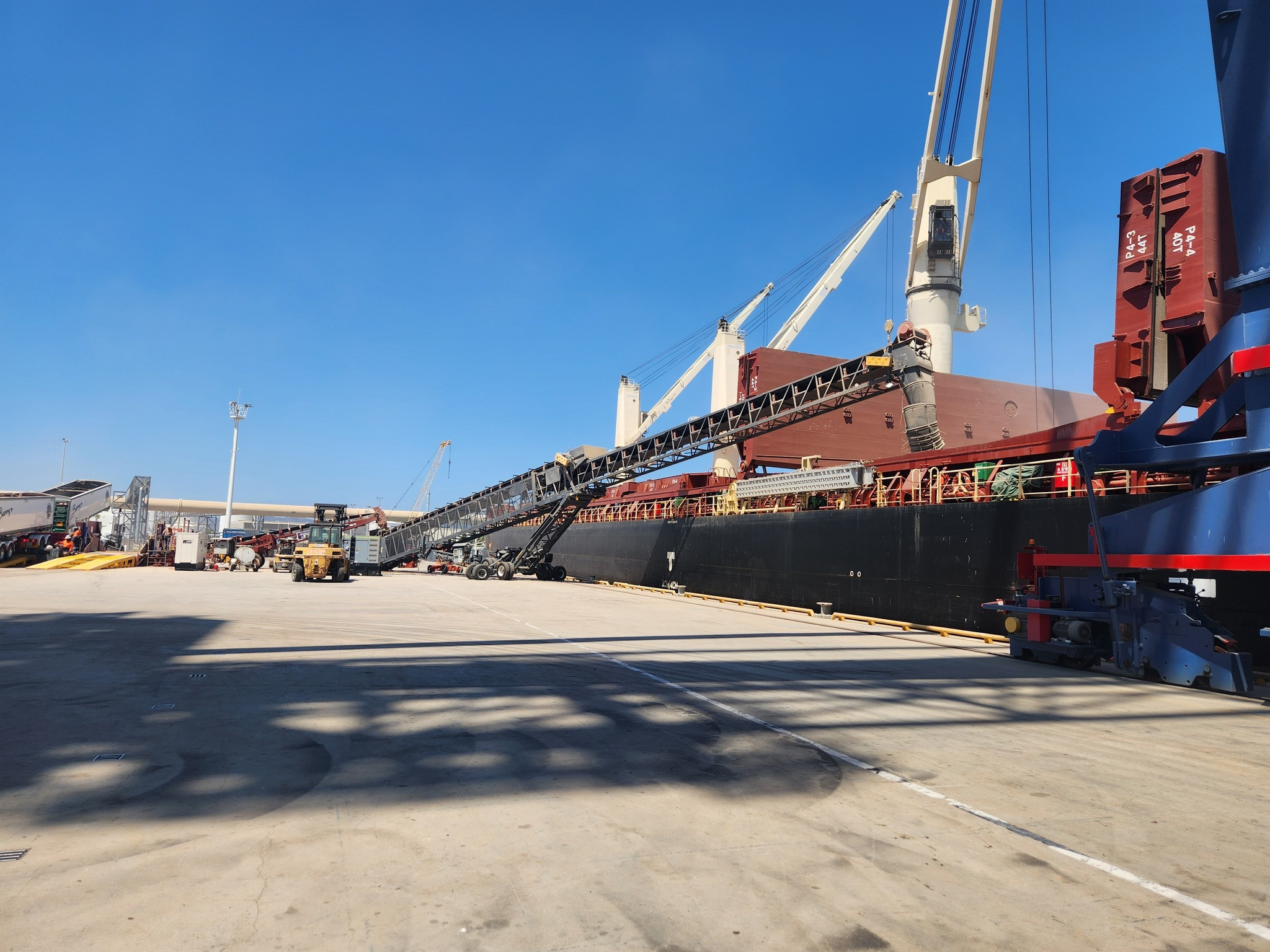
At the same time, a major milestone was being celebrated down the line at the Port of Townsville.
This week, the port loaded its first-ever bulk shipment of chickpeas – 38,500 tonnes bound for Pakistan and India – grown largely in the Richmond, McKinlay and Flinders shires.
Cr Wharton said the achievement showed what was possible when regional councils thought beyond their boundaries.
“Those chickpeas we grew are on that first boat out of Townsville,” he said.
“The grain loader came up from Brisbane and did the job. We’re really pushing Townsville Port because where we are in the Hughenden-Richmond-Julia Creek area is the new frontier.
“That’s where the deep black soil is.”
He compared the region’s agricultural expansion to the historical progression of Australia’s farming frontier.
“When I was a kid, the Riverina was where everything came from,” he said.
“Then it came up to Mungindi, then Toowoomba, then the Darling Downs, and then Central Queensland. We’re the next frontier.”
The council’s ambition extends far beyond one crop.
With government support, two 2000-tonne silos have been built at Maxwelton, with a third underway, allowing grain to be stored locally before being railed or trucked east.
“Those silos are already full,” Cr Wharton said proudly.
“The third one’s for mung beans – we’re doing irrigated mung beans next.”
For Richmond Shire, the numbers are beginning to stack up.
“We like making money,” Cr Wharton said with a grin.
“That’s what it’s all about.”
Mr Bennett said the goal was never just to turn a profit but to seed an industry.
“We’re trying to develop dryland farming up into this area,” he said.
“If we can attract machinery dealers, mechanics and all the associated services, it means jobs and long-term sustainability. Council’s income is the first step – the bigger picture is building a stronger community.”
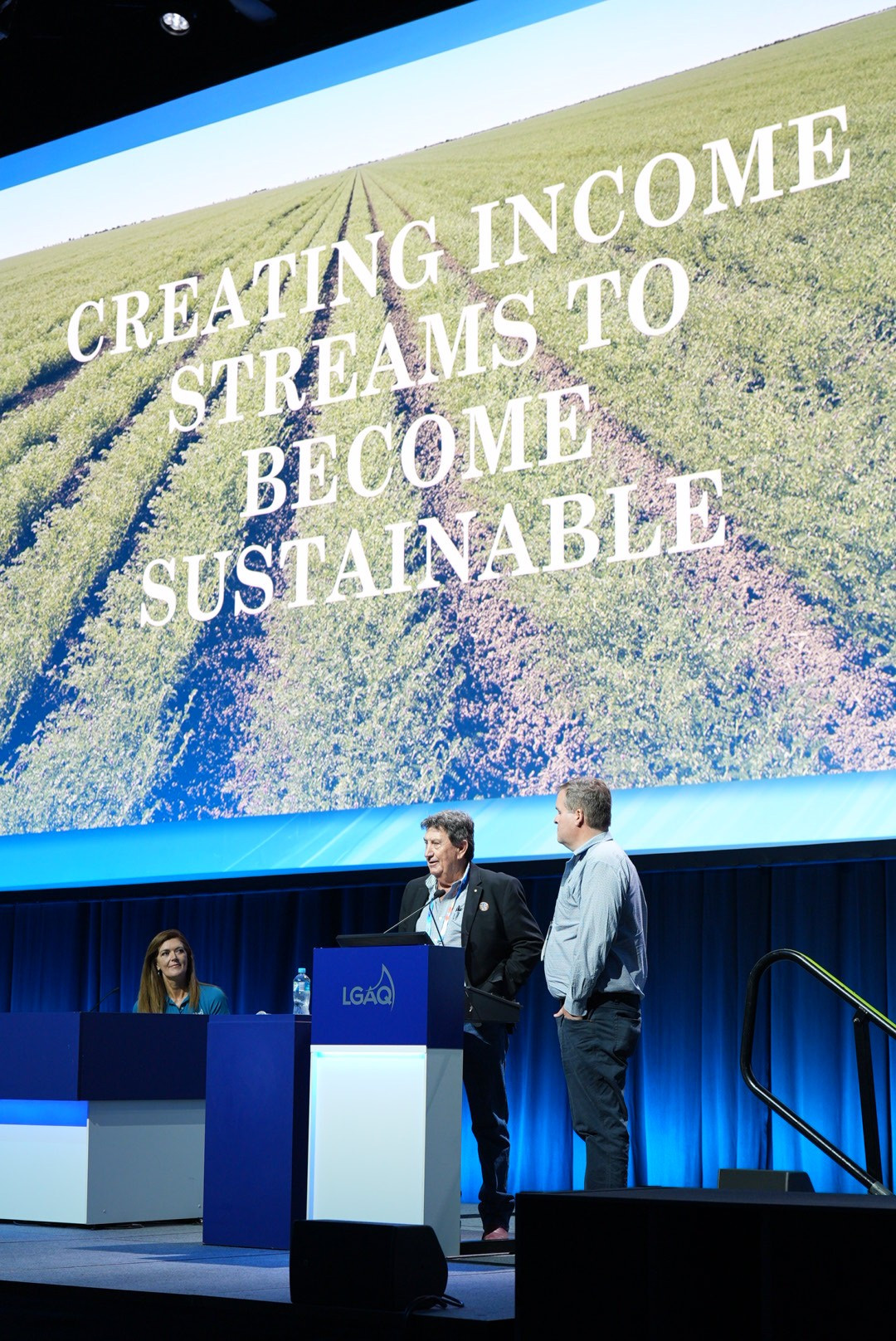
Already, the results are visible. School enrolments in Richmond have climbed to 120 students, up from fewer than 100 in recent years.
“It might not sound like much, but that’s a big deal for a small community like ours,” Mr Bennett said.
“We want to get to a P–12 school eventually. At the moment, we’re P–10, and we lose a lot of kids to boarding school and don’t get them back.”
The chickpea success story has also attracted outside interest.
Large operators from southern Queensland are buying land in the district, drawn by its soil and expanding infrastructure.
“You’ve got to get the right soil,” Cr Wharton said.
“You’ve got to get the black soil and the deep black soil. The farmers are coming – people from Dirranbandi and St George are already up there buying land.”
That influx, he believes, could transform the shire’s future.
“We’re trying to build cooperation,” he said.
“We want more people, more kids in schools, more business in town. This is how you do it.”
The profits are modest by corporate standards, but for a rural shire of just 800 residents, $300,000 in new income is meaningful – especially when it doesn’t rely on external grants.
“We’re proud that we’ve done this ourselves,” Cr Wharton said, although he thanked the Department of State Development for helping with the funding of the silos at Maxwelton.
“If we can get two shipments out next year, we’ll have proven the model works.”
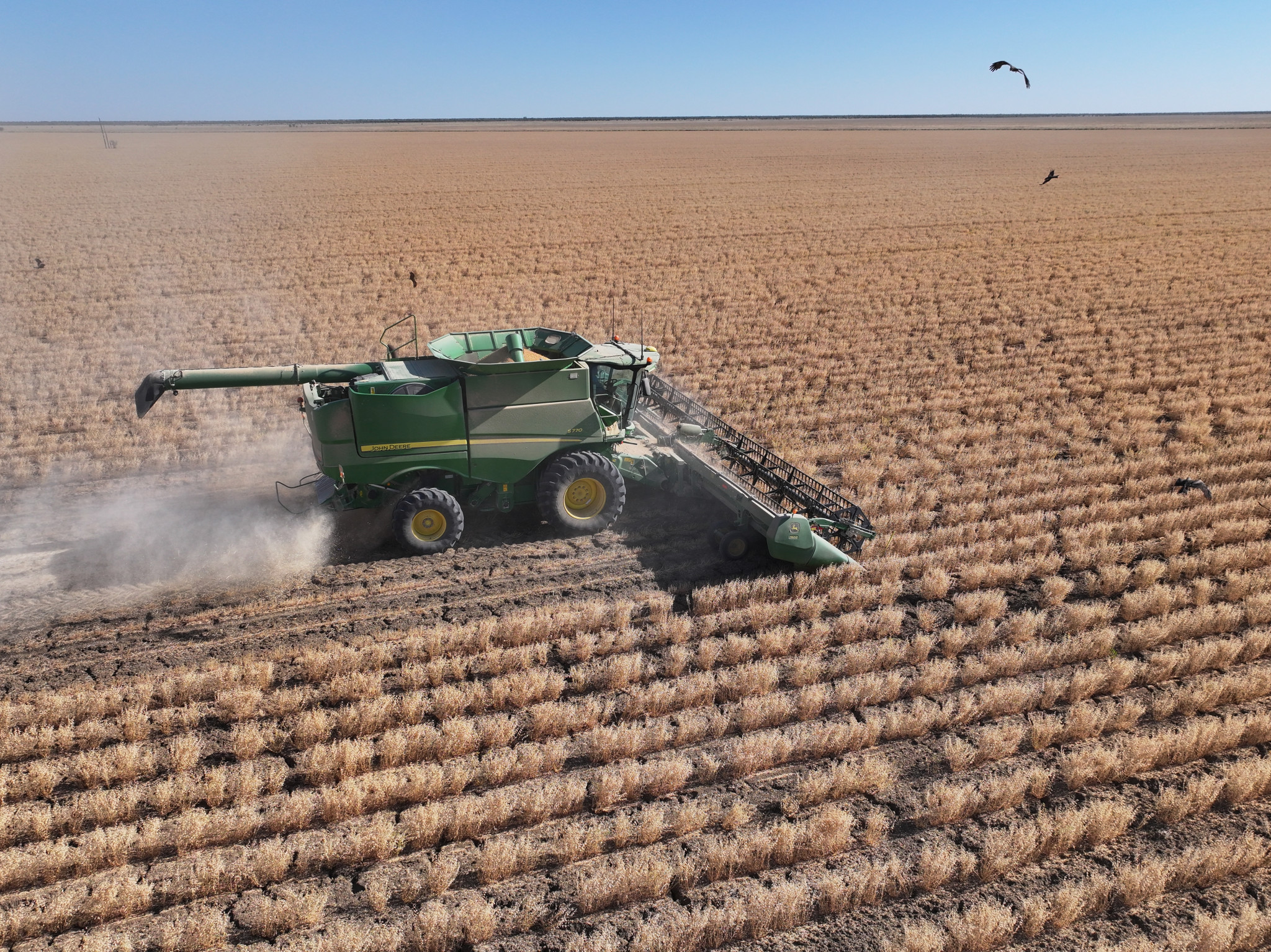
Still, the project hasn’t been without challenges.
Harvesting had to pause during the day after machines caught fire in the heat, forcing them to move to night so they could identify any hotspots before they flared up.
Pests, particularly locusts, forced extra spraying, adding costs.
“We had to spray four times to clear the native pasture and then for locusts,” Mr Bennett said. “We hadn’t seen locusts in a decade, but they turned up when we started farming.”
Freight is another obstacle.
The Port of Townsville’s new bulk-grain capability is a game-changer, but distance and cost remain significant.
“Even with Townsville taking bulk loads, we’re still 600 kilometres inland,” Cr Wharton said.
“Getting it there eats into margin, but at least now it’s possible.”
For Cr Wharton, the economic argument is clear.
“We’ve got to have a business,” he said.
“We can’t just rely on government money and hope for the best. This is about taking control of our own future.”
He believes the Richmond experience could serve as a template for other rural councils.
“It’s not easy,” he said.
“It takes a long time to get the team together, but if you’ve got the right CEO, the right Director of Works and a council that wants to do it, you can.”
Mr Bennett echoed that sentiment.
“Council’s income is good for our bottom line, but it’s also about creating a stronger, more resilient community,” he said.
“We’re building something that keeps families here, keeps schools open, and keeps our economy turning over.”
As the first grain ships loaded at Townsville Port sail towards South Asia, Richmond’s gamble has paid off – and it has put a small inland shire firmly on the map of Australia’s pulse-growing regions.
Standing before delegates at the LGAQ conference, Cr Wharton summed up what the achievement means to his community.
“This is more than chickpeas. It’s about building a new chapter for the dryland agricultural economy of North West Queensland,” he said.
“It’s about our shire stepping up and being part of a global supply chain. When that ship leaves, full of chickpeas grown out of our country, we’ll know we’ve done something that matters for our community and our future.”
